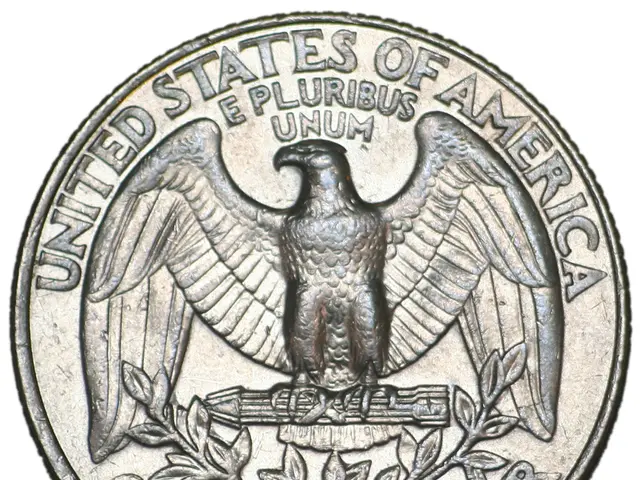Amazon's Approach to Promotion and Sales: Amazon Marketing Approach
Amazon, the world's leading online retailer, maintains its dominance in the e-commerce market through a combination of AI-powered advertising, extensive product offerings, and a customer-centric approach.
The company's vision is to offer customers the best shopping experience on the internet, while its mission is to be Earth's most customer-centric company. This commitment to customer satisfaction is evident in Amazon's free delivery service to remote locations, as well as its micro-level segmentation strategy that aims to convert visitors into long-term, high-value customers.
Amazon has achieved economies of scale through its extensive product offerings, including electronics, toys and games, apparels, DIY, and more. The company's platform hosts nearly 9.7 million sellers, accounting for 38% of US e-commerce transactions, making it the primary channel for product discovery and purchase.
Amazon's marketing strategy heavily leverages AI-driven innovations for targeting and personalized consumer engagement. The company's advertising business is on track to become a $100 billion segment, rivaling Google and Meta, through the use of AI tools such as Amazon Marketing Cloud for advanced shopper insights and automated video/audio ad creation.
The company's robust customer-centric approach to analyzing customer buying behavior has helped it maintain a competitive edge over its competitors. Amazon's platform requires heavy advertising investment for sellers to maintain or grow visibility amid fierce competition, reinforcing the platform’s role as the primary channel for product discovery and purchase.
Amazon positions itself as a Glocal (Go global Act local) e-commerce giant, offering products for delivery to remote locations. However, local e-commerce portals like Flipkart (India), OTTO (Europe), and regional players wield localized strategies such as tailored product offerings and market-specific innovations, which challenge Amazon’s global model. These local portals leverage deep regional knowledge and logistics networks to maintain strong footholds, particularly in markets with distinct consumer behaviors and regulatory environments.
In India, Amazon's tagline is "#Aur Dikhao," meaning "Show us more," while globally it is "From A to Z." The company uses demographic and psychographic segmentation in its marketing strategy, based on actual purchase behavior.
Amazon's brand equity was worth US$ 176 billion by April 2015, and its customer base consists mainly of upper and middle-class social groups, professionals, and businessmen who find online shopping convenient. The company has achieved competitive advantage through acquiring IT and e-commerce start-ups, providing high value to customers at low cost.
The global E-commerce market is still evolving, with fierce competition from companies like Alibaba, eBay, and start-ups. Amazon's distribution strategy includes using existing vendor warehouse space for consumer-packaged goods. On the BCG matrix, Amazon has certain businesses that are cash cows, stars, and question marks. E-books, movies on demand, and Amazon prime are cash cows, Kindle, VOD, and Amazon web services are question marks, and electronics and other consumer durable products are stars.
In conclusion, Amazon's competitive marketing strategy is characterized by its vast integrated ecosystem, AI-driven advertising innovations, and scale in market reach, which together maintain its leading position against a diverse field of global and local e-commerce rivals. However, local portals sustain competitive pressure by tailoring offerings and operations to specific regional markets, ensuring a competitive and evolving landscape for Amazon’s marketing dominance.
[1] Chaffey, D., & Ellis-Chadwick, F. (2019). Digital marketing: strategy, implementation and practice. Pearson Education. [2] Lohse, B., & Hess, F. (2019). The Amazon effect: The impact of the online retail giant on local retailers and the high street. Centre for Retail Research. [3] Vogel, T. J. (2013). The Amazon way: 14 leadership principles. Portfolio/Penguin. [4] Zakaria, A. (2019). The rise of Amazon: How the company became the world's dominant online retailer. Harvard Business Review Press. [5] Sequence Commerce. (n.d.). About. Retrieved from https://www.sequencecommerce.com/about/
- Amazon's finance department, driven by its extensive advertising business and AI-driven innovations, is on target to generate a $100 billion segment, positioning it as a substantial player alongside Google and Meta.
- In the realm of business strategy, Amazon's customer-centric approach and commitment to offering a wide array of products have led to economies of scale, enabling the company to maintain dominance in the global e-commerce market.




